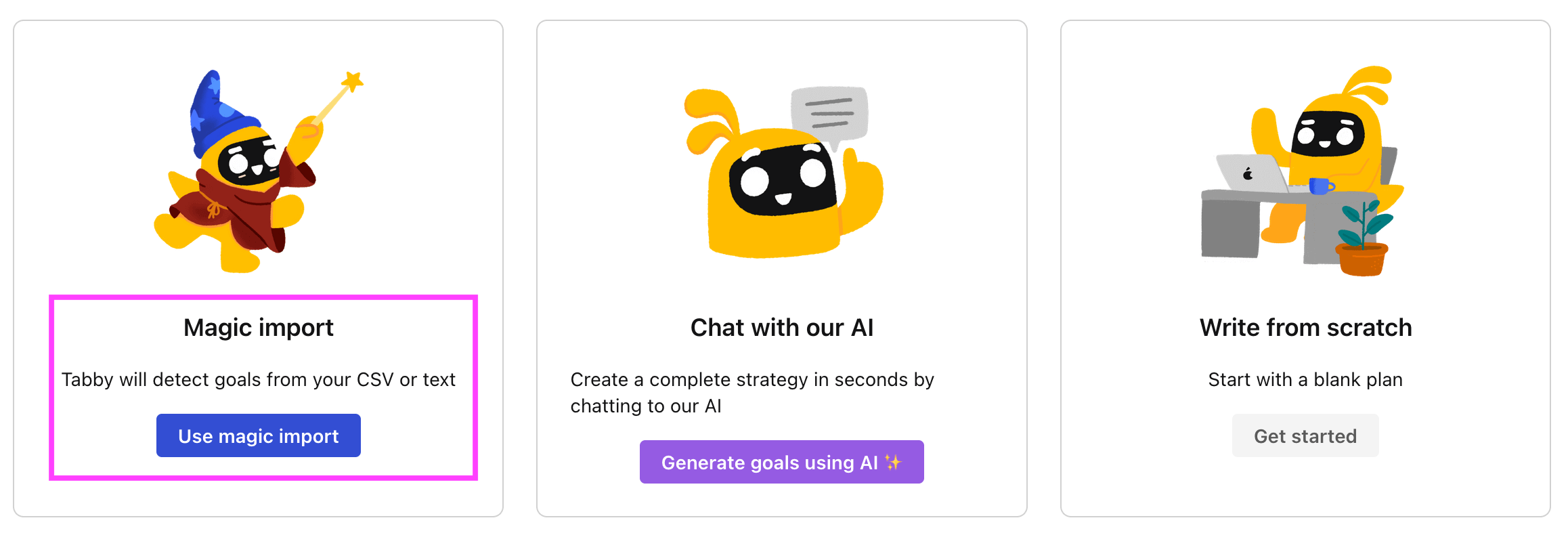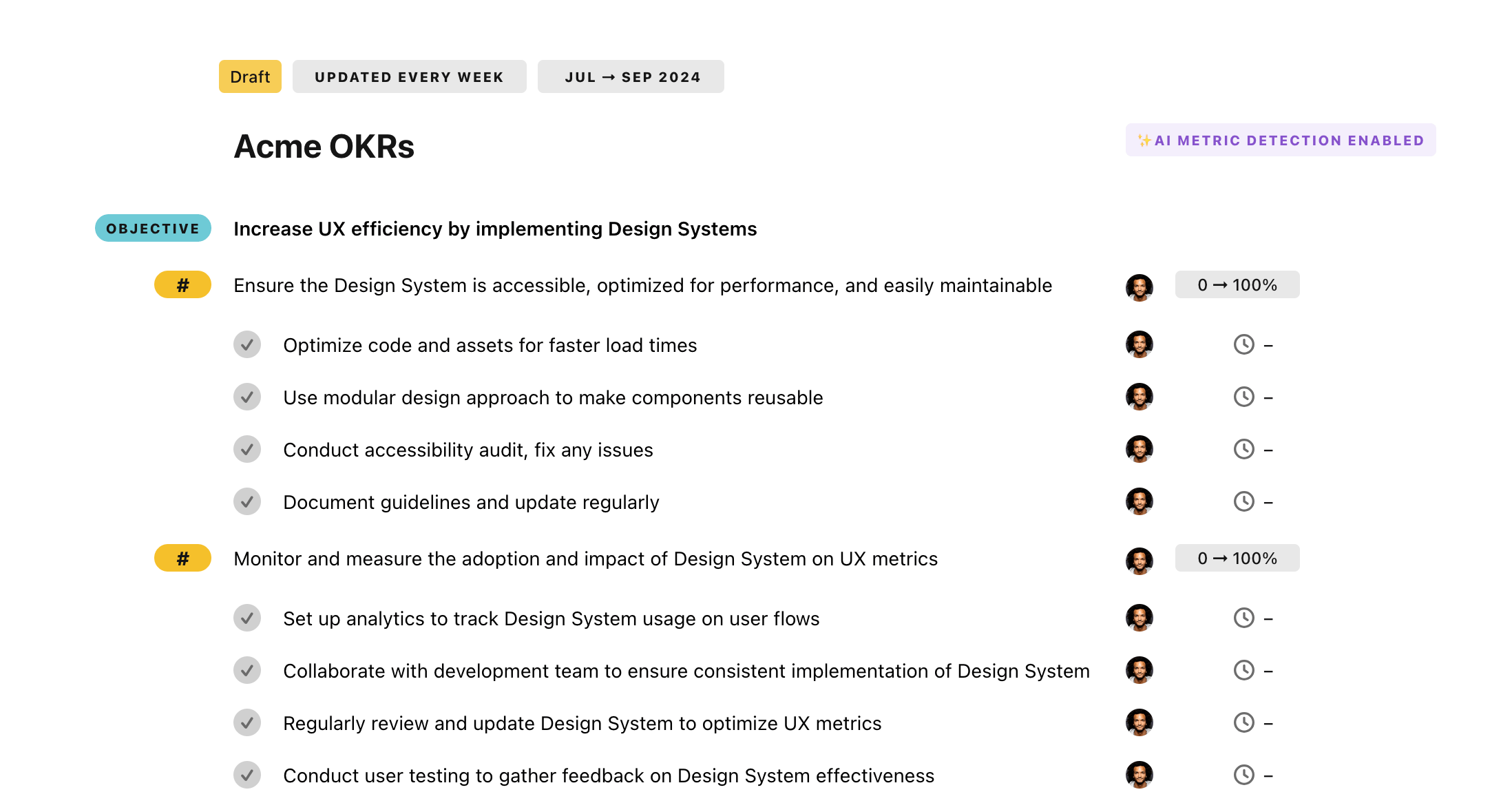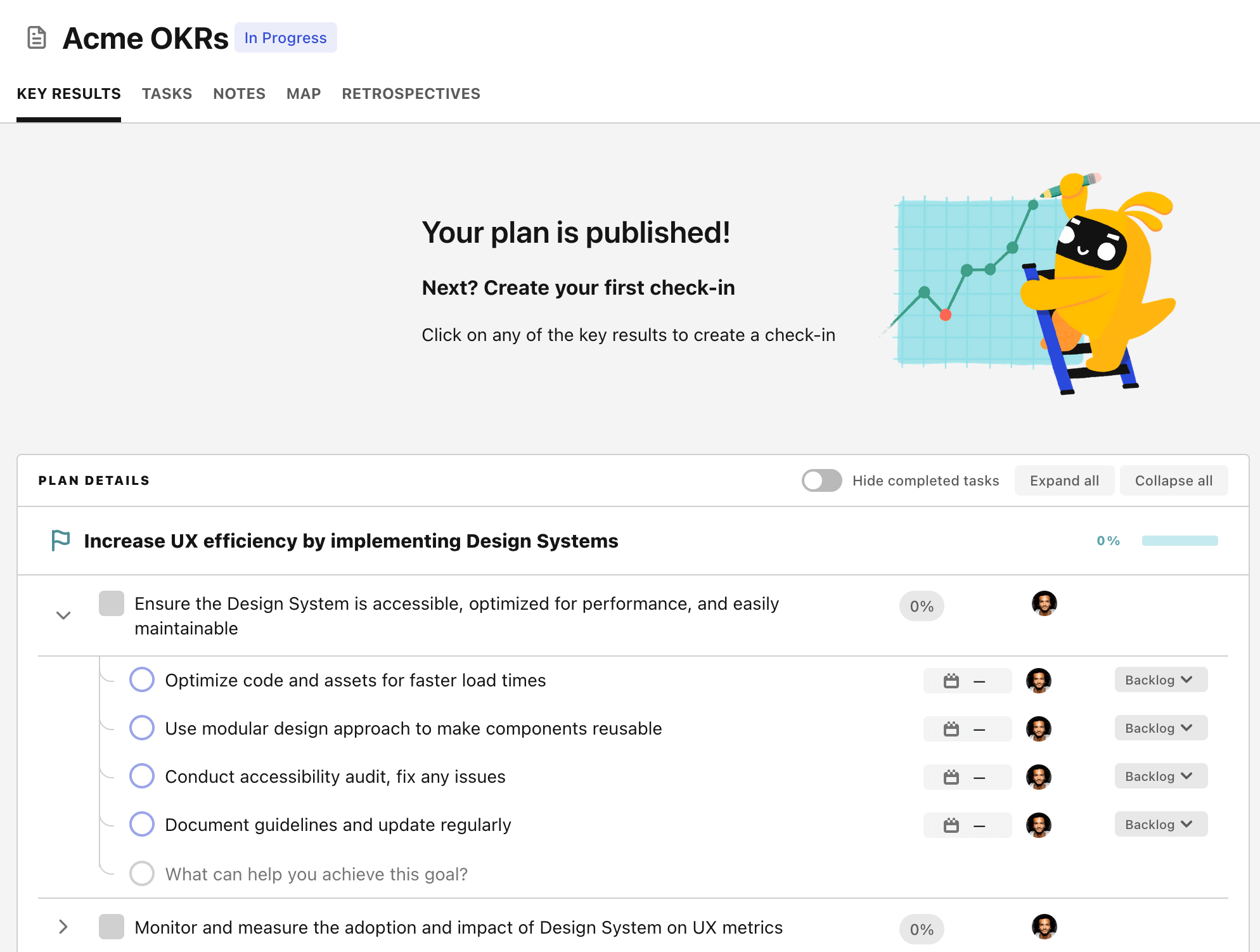OKR template to enhance productivity and quality of technical writing team
Your OKR template
The second objective is focused on increasing the team's document output by 20% by utilizing efficient writing tools and techniques. This can be achieved by training team members on efficient writing methods, the implementation of advanced software for quicker document production, and monitoring and optimizing the writing process on a regular basis.
The OKR outlines another objective to minimize grammatical and spelling errors by more than 80% via thorough proofreading sessions. The measures to meet this objective include encouraging peer reviews, scheduling regular proofreading sessions, and using software tools for checking spelling and grammatical errors.
Overall, this OKR aims to increase the productivity of the technical writing team and augment the quality of their output by minimizing errors and increasing efficiency in the writing and editing process.
ObjectiveEnhance productivity and quality of technical writing team
KRAttain a 95% positive feedback rate on clarity and usefulness of documents
Develop clear, concise documentation with structured, straightforward language
Regularly review and update existing documents
Collect and implement feedback for constant improvement
KRIncrease document output by 20% using efficient writing tools
Train staff on efficient writing techniques and tools
Implement advanced writing software for quicker document creation
Regularly monitor and optimize writing process for productivity
KREliminate more than 80% of grammatical and spelling errors via thorough proofreading sessions
Encourage peer reviews for additional feedback
Implement daily proofreading sessions in the schedule
Utilize software tools for spelling and grammar checks
How to edit and track OKRs with Tability
You'll probably want to edit the examples in this post, and Tability is the perfect tool for it.
Tability is an AI-powered platform that helps teams set better goals, monitor execution, and get help to achieve their objectives faster.
With Tability you can:
- Use AI to draft a complete set of OKRs in seconds
- Connect your OKRs and team goals to your project
- Automate reporting with integrations and built-in dashboard
Instead of having to copy the content of the OKR examples in a doc or spreadsheet, you can use Tability’s magic importer to start using any of the examples in this page.
The import process can be done in seconds, allowing you to edit OKRs directly in a platform that knows how to manage and track goals.
Step 1. Sign up for a free Tability account
Go tohttps://tability.app/signup and create your account (it's free!)
Step 2. Create a plan
Follow the steps after your onboarding to create your first plan, you should get to a page that looks like the picture below.

Step 3. Use the magic importer
Click on Use magic import to open up the Magic Import modal.
Now, go back to the OKR examples, and click on Copy on the example that you’d like to use.

Paste the content in the text import section. Don’t worry about the formatting, Tability’s AI will be able to parse it!

Now, just click on Import from text and let the magic happen.

Once your example is in the plan editor, you will be able to:
- Edit the objectives, key results, and tasks
- Click on the target 0 → 100% to set better target
- Use the tips and the AI to refine your goals
Step 4. Publish your plan
Once you’re done editing, you can publish your plan to switch to the goal-tracking mode.

From there you will have access to all the features that will help you and your team save hours with OKR reporting.
- 10+ built-in dashboards to visualise progress on your goals
- Weekly reminders, data connectors, and smart notifications
- 9 views to map OKRs to strategic projects
- Strategy map to align teams at scale